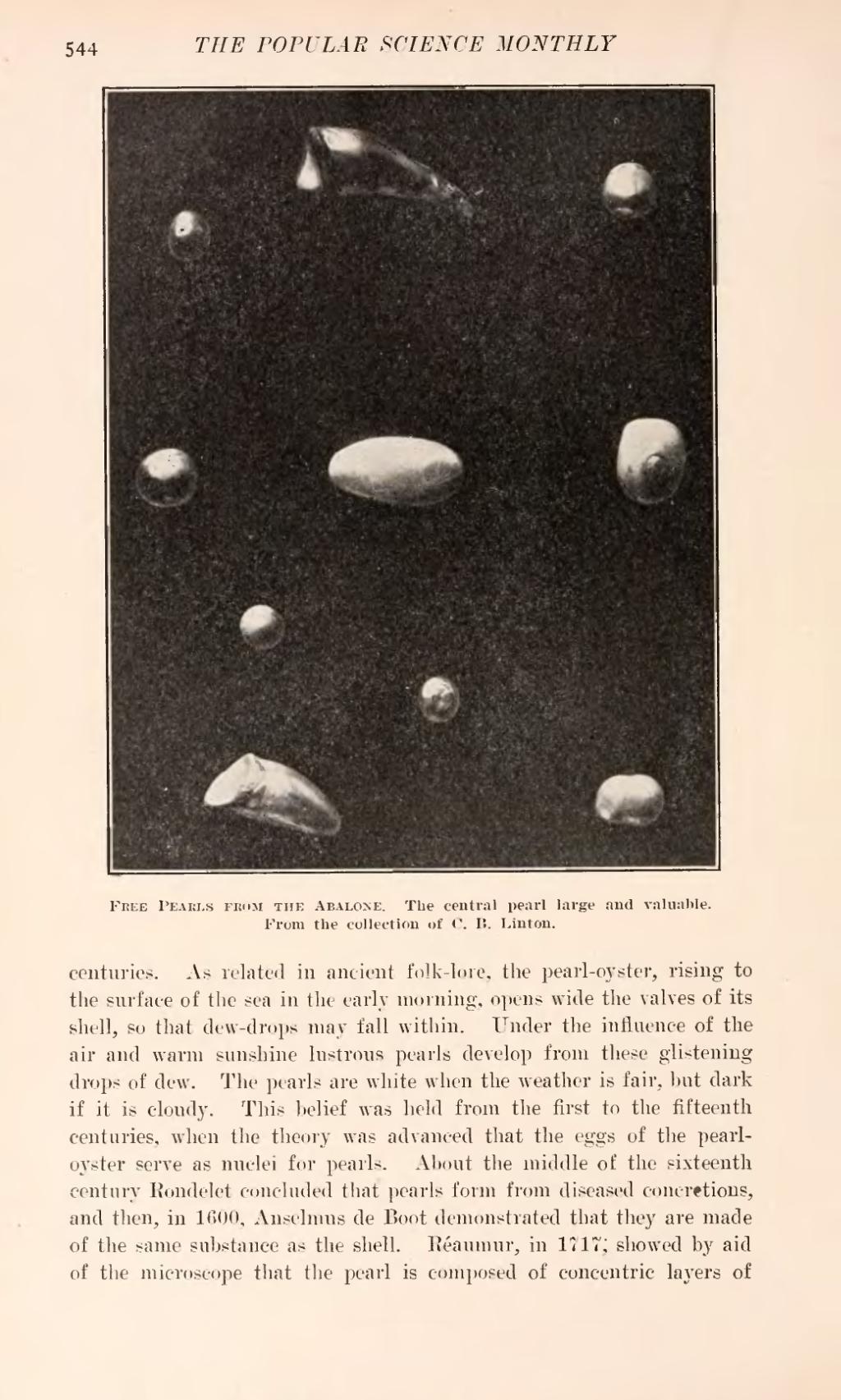
centuries. As related in ancient folk-lore, the pearl-oyster, rising to the surface of the sea in the early morning, opens wide the valves of its shell, so that dew-drops may fall within. Under the influence of the air and warm sunshine lustrous pearls develop from these glistening drops of dew. The pearls are white when the weather is fair, hut dark if it is cloudy. This belief was held from the first to the fifteenth centuries, when the theory was advanced that the eggs of the pearl oyster serve as nuclei for pearls. About the middle of the sixteenth century Rondelet concluded that pearls form from diseased concretions, and then, in 1600, Anselmus de Boot demonstrated that they are made of the same substance as the shell. Réaumur, in 1717; showed by aid of the microscope that the pearl is composed of concentric layers of
